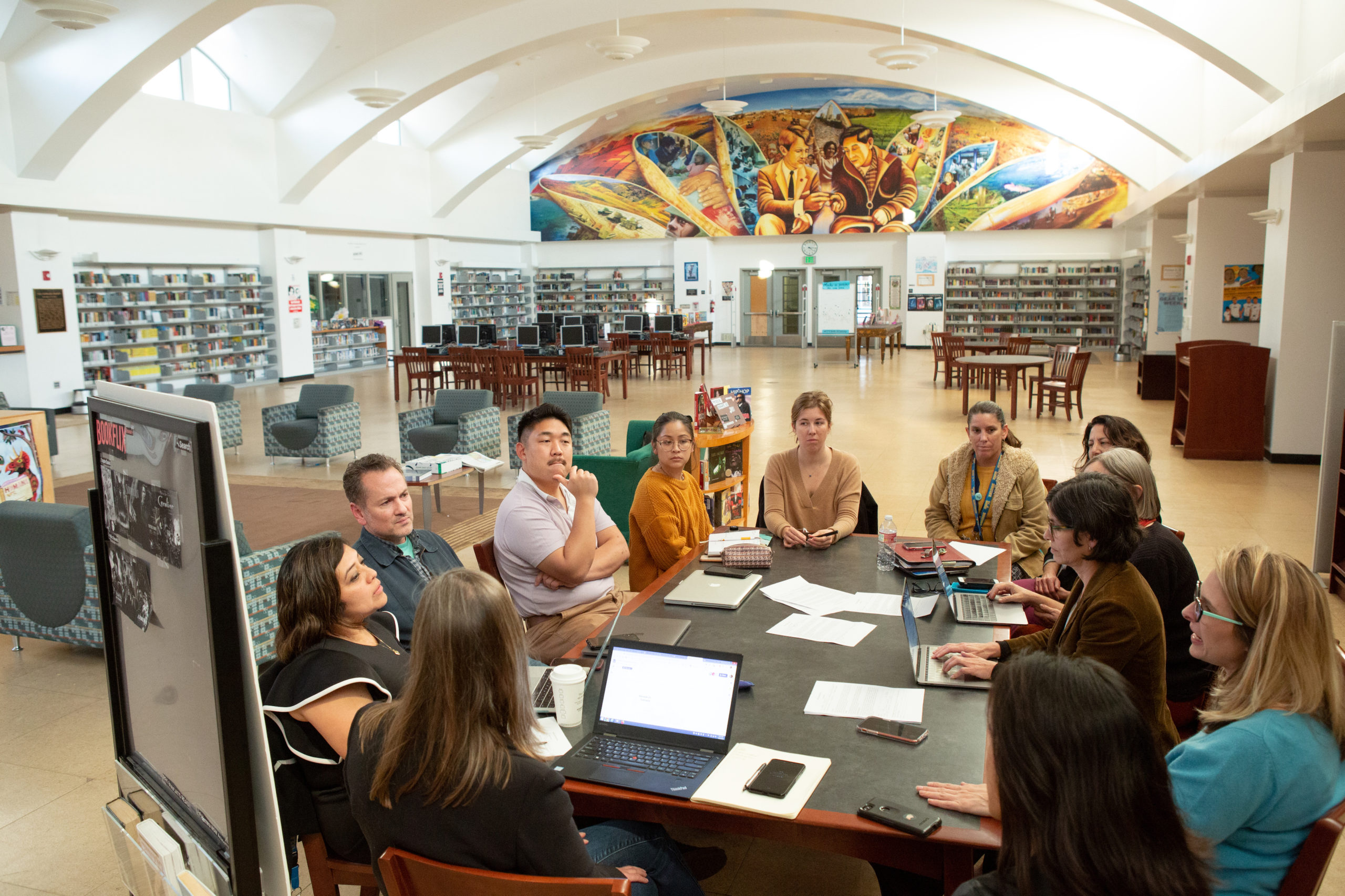
Overview
Engaging with users is at the heart of successful product development. The Tools Competition recognizes the importance of seeking feedback from families, teachers, and students when developing ed tech tools, and aims to support developers in doing so.
This case study provides details on how Podsie began engaging users and how they continue to do so today. Throughout this interview, Joshua Ling, Cofounder of Podsie, shared tips and strategies from his team’s experience working with teachers and students.
Some strategies that Ling highlights include:
- Find groups, organizations, or individuals that align with the problem your product aims to solve.
- Utilize a variety of methods to collect feedback, such as: meeting with users, establishing online communities, analyzing usage data, and observing the product in action.
- Implement a process or framework that helps determine how to prioritize new updates or features.
- Engage in rapid iteration by giving users bare bones versions of features and then build and refine based on feedback.
- Establish a continuous cycle of feedback.
Read on to see how the team at Podsie put these strategies into action.
What is Podsie?
Created by former teacher, Joshua Ling, Podsie is a free learning tool that serves middle and high school students and teachers by helping students retain what they’ve learned. Podsie accumulates questions to build an intelligent flashcard deck, and prompts students to review the questions at optimal intervals throughout the school year. These intelligent flashcard decks, which are personalized to ensure that students review the specific concepts that they are struggling with, maximize students’ chances of remembering what they’ve learned.
How Does it Work?
Podsie allows teachers to create assignments with questions for students. Once a student completes an assignment, the questions are transferred into their personalized and automated review deck. The tool’s spacing algorithm then determines when and what topics the student should review to ensure long-term retention. Teachers are regularly provided real-time analytics on each student’s learning, so they not only know who needs additional support, but also the specific concepts a student needs support with.
Refining the Tool with User Feedback
From the outset, the founders of Podsie were interested in creating a tool that would help students better retain the information they learned, thereby increasing their overall learning outcomes. The goal was to create a retention tool more efficient than traditional studying techniques, such as cramming and teacher-designed monthly review assessments. More importantly, the team wanted this tool to utilize some of the strategies learning scientists had proven were highly effective in improving student learning but were still underutilized in the classroom.
As a former teacher, Joshua Ling, CEO and Cofounder of Podsie, had an initial idea of what teachers and students might want out of such a tool. To test the validity of his ideas, Ling and his team recruited approximately 10 teachers (across subjects and grade levels) for a beta release while they continued to build their MVP.
During this phase of development, the team held regular meetings to seek feedback from the teachers. This helped them better understand the needs of the teachers, the features they most desired in an educational technology tool, and what they believed would work best. For example, the team realized that contrary to their initial belief that teachers would want a tool that they could use as they saw fit, most teachers communicated their desire for structure. That is, they wanted a simple tool that explained exactly how and when to use it. This led to the addition of features that guide teachers through the recommended usage.
Continuing to Iterate with the Help of Users
Connecting with users continues to be at the heart of the team’s work. In addition to meeting with teachers as they did during the initial stages of product development, Podsie has also set up an online community where teachers can connect with each other, provide feedback, and request features that they would like to see. This online community is particularly valuable because it gives all users the opportunity to provide feedback on Podsie, and allows the team at Podsie to stay in tune with users by drawing insights from the conversations they observe.
For example, Podsie planned to develop and test a bulk question upload feature based on the feedback of a teacher, but this feature wasn’t a priority in comparison to other features. However, after seeing a number of teachers request the same bulk question upload feature in the online community, the team realized that it was a widespread need and prioritized creating it.
To assist them in prioritizing product development decisions, Podsie has implemented a prioritization process framework that considers several factors before adding any new feature to the tool. This includes questions such as: (1) will the new feature help Podsie achieve its end mission and vision?; (2) what are the associated costs?; (3) what are the potential impacts?; and finally, (4) how quickly can it be built? The goal is to build new features as quickly and affordably as possible, and to get them in front of testers for immediate feedback.
The Podsie team also collects feedback from students via periodic surveys administered by teachers, and analyzes usage data. The usage analytics are crucial and measure a number of things including whether or not the students are studying and keeping up with their personal decks. Ling also regularly volunteers at a local middle school where Podsie is utilized in the classroom, which helps him observe how the students are responding and reacting to the tool.
User Engagement: Challenges and Learnings
Because Podsie launched at the height of the pandemic while teachers were already facing the uncertainties associated with remote learning, convincing them to adopt one more tech tool was difficult. To help reach potential users, Ling connected with a group called The Learning Scientists, who are passionate about bringing the science of learning knowledge to educators. He and his team collaborated with the group by joining one of their podcasts and writing a guest blog post for their website. Collaborating with The Learning Scientists, given their established user base, was crucial in connecting Podsie with a group of early adopters. In fact, Ling advises that other ed tech developers also seek out groups, organizations, or individuals that are aligned with the issue they are trying solve.
Another issue that Podsie faced in the beginning was over-indexing based on teachers’ feedback. Their team would build out fully-rich features, which was costly and time-consuming, sometimes only to find out that these features weren’t as useful as teachers had imagined. Through trial and error, the Podsie team realized that rather than always going for a fully-rich implementation of a new feature, sometimes it was best to engage in rapid iteration by building a bare bones version that they could quickly get to users for feedback to ensure that it was worth the full-scale investment.
The value that the team at Podsie places on continuously refining and iterating to meet the needs of users is apparent. Ling stresses that all ed tech developers have a moral obligation to teachers and students when developing and implementing any new educational technology because their time is extremely valuable. It is imperative, therefore, that ed tech creators strive to understand and incorporate the needs of teachers and students to ensure that tools improve student learning.



